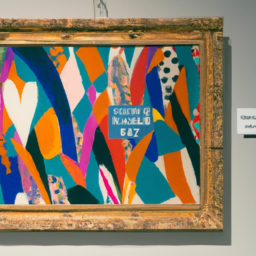Investing in art has long been considered a niche market reserved for the wealthy elite. However, with the rise of fractional ownership platforms like Masterworks, art investing is becoming more accessible to everyday investors. For investors with portfolios over $500,000, investing in art with Masterworks can help boost their net worth further. See how this platform is revolutionizing the art market and providing new investment opportunities for all.
If you're wondering whether art is a good investment, or you'd like to find creative, alternative ways to invest in art, you've come to the right place. Art investing allows you to combine your love of the arts with a hedge against inflation. Historically, art has been a stable and lucrative investment, with some pieces selling for millions of dollars. However, investing in art can be tricky, as it requires a deep understanding of the market and a willingness to take risks.
One way to mitigate these risks is by investing in fractional shares of artwork. This allows investors to own a small piece of a valuable piece of art, without having to purchase the entire piece. Fractional ownership platforms like Masterworks allow investors to invest in blue-chip artwork previously only available to high net worth individuals. This not only provides investors with the opportunity to diversify their portfolio but also gives them access to a previously untapped market.
Another emerging trend in art investing is the use of Non-Fungible Tokens (NFTs). NFTs are unique digital assets that represent ownership of a specific piece of art. NFTs allow for the secure transfer of ownership and can be traded on blockchain platforms. This provides investors with a new way to invest in art, without having to physically own the artwork.
Investing in portfolios of art-backed loans is another way investors can generate stable, passive income with a strong level of principal protection. These loans are secured by valuable art collections and are typically less volatile than traditional investments like stocks and bonds.
Though no investment is entirely without risk, contemporary art has shown remarkable resilience, while increased access to data and technology has made the market more transparent. This has allowed investors to make more informed decisions and mitigate some of the risks associated with art investing.
While the potential returns of art investing can be high, it's important to remember that it's not a get-rich-quick scheme. Investing in art requires research, due diligence, and a willingness to take risks. However, for those willing to put in the time and effort, the rewards can be significant.
In recent months, there have been questions raised about the practices of art investing start-up Masterworks. Former employees have voiced concerns about the company's practices, including the valuation of artwork and the transparency of the platform. While Masterworks has denied any wrongdoing, these allegations highlight the importance of doing your own research before investing in art.
A series of recent auctions have also raised questions about the role of large financial institutions in supporting local art scenes. Some have criticized these institutions for driving up prices and making it more difficult for smaller buyers to enter the market. As the art market continues to evolve, it's important for investors to stay informed and aware of the changing landscape.
In conclusion, investing in art can be a creative and lucrative way to grow your wealth. With the rise of fractional ownership platforms and NFTs, investing in art is becoming more accessible to everyday investors. However, it's important to remember that art investing requires research, due diligence, and a willingness to take risks. By staying informed and aware of the changing market, investors can make informed decisions and potentially reap significant rewards.
Ticker: No specific tickers mentioned.
